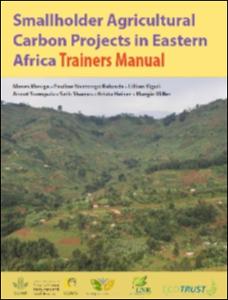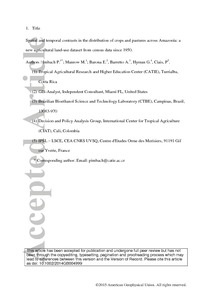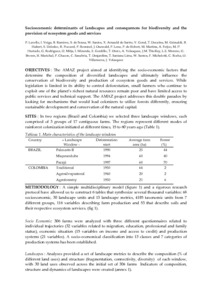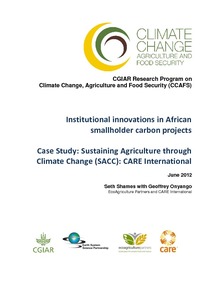déboisement
AGROVOC URI:
Riesgos y oportunidades: Una introducción a la gobernanza forestal, las comunidades y REDD+ en América Latina
REDD+ es un mecanismo financiero con un potencial significativo para cambiar los incentivos conducentes a la deforestación y el cambio de uso de la tierra, con efectos en la conservación del bosque y la sostenibilidad. REDD+ no es en sí mismo una reforma de la gobernanza, pero afectará a la gobernanza forestal o será afectado por ella. REDD+ puede mejorar la gobernanza forestal o ser minado por sus imperfecciones, ya que depende de una buena gobernanza forestal para ser eficiente, efectivo y equitativo.
Rights to forests and carbon under REDD+ initiatives in Latin America
Rights to large areas of forest have been granted to communities and indigenous peoples in Latin America, offering these groups an opportunity to participate in REDD+ initiatives. However, tenure is not always secure, and security of tenure alone is insufficient to guarantee positive outcomes for both forests and livelihoods. The question of carbon tenure rights has only just begun to be addressed, and even less attention has been given to liabilities. REDD+ initiatives provide an opportunity to consolidate indigenous territories but present a risk to those without secure land rights.
Smallholder Agricultural Carbon Projects in Eastern Africa
This manual has been developed to help build the capacities of farmers, farmers groups, extension staff and project managers who are implementing agricultural carbon projects in Eastern Africa. The manual describes the steps for implementing an afforestation/reforestation voluntary carbon project based on the Plan Vivo Standard.
Snapshot of REDD+ in Papua New Guinea
Soil property changes over a 120-yr chronosequence from forest to agriculture in western Kenya
Much of the native forest in the highlands of western Kenya has been converted to agricultural land in order to feed the growing population, and more land is being cleared. In tropical Africa, this land use change results in progressive soil degradation, as the period of cultivation increases. Both rates and variation in infiltration, soil carbon concentration and other soil parameters are influenced by management within agricultural systems, but they have rarely been well documented in East Africa.
Soybean technology and the loss of natural vegetation in Brazil and Bolivia
This paper looks at the impact of the introduction of new soybean technologies on the clearing of natural vegetation (forest and savanna) in southern Brazil, the Brazilian Cerrado, and Santa Cruz, Bolivia. The paper looks at how technological change interacted with other government policies and examines general equilibrium effects on product and labor markets as well as the direct on-farm effects. In southern Brazil new technologies made large-scale mechanized soybean production more profitable.
Spatial and temporal contrasts in the distribution of crops and pastures across Amazonia: a new agricultural land-use dataset from census data since 1950
Socioeconomic determinants of landscapes and consequences for biodiversity and the provision of ecosystem goods and services
Sustainable animal production for the agropastoral systems of the Brazilian Cerrados: special project funding
Sustaining Agriculture through Climate Change (SACC): CARE International
Case study for the report "Institutional innovations in African smallholder carbon projects" available at http://hdl.handle.net/10568/21222





